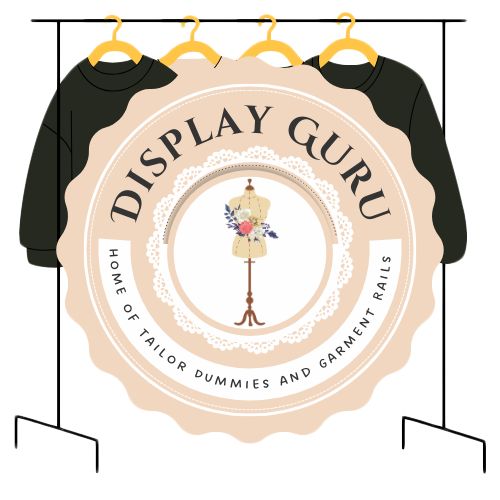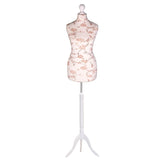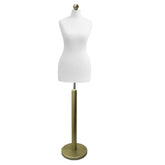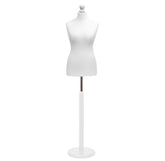Your Guide to Crafts Storage Drawers
If you're a crafter, you know the feeling. That ever-growing collection of supplies starts to take over, doesn't it? The right crafts storage drawers are an absolute game-changer, turning a cluttered workspace into a calm, organised haven where your creativity can actually breathe. They do more than just tidy up; they protect your materials and, most importantly, give you back precious time to make things rather than hunt for them.
Taming Creative Chaos with the Right Storage

Let’s be honest, trying to manage a mountain of beads, fabrics, paints, and tools can feel completely overwhelming. Without a decent system in place, your creative corner can quickly slide into chaos, strangling inspiration before it even has a chance. This is precisely why dedicated storage drawers aren't just furniture—they're an essential part of any crafter's toolkit.
Getting your supplies in order makes a huge difference:
- Less Frustration: You can find exactly what you need in a matter of seconds. No more frustrating rummaging for that one specific button or colour of thread.
- Protected Materials: Delicate supplies like paper, fabric, and yarn stay safe from dust, accidental damage, and fading.
- More Creative Headspace: A tidy environment really does help to clear your mind, letting you focus entirely on the project at hand.
It’s no surprise that the demand for smart storage has soared. Here in the UK, the crafting boom that started post-pandemic has seen interest in handmade items like jewellery and crochet hit a new high, and with it, the need for effective ways to store all those supplies. If you're setting up your own creative nook, you'll find plenty of great ideas in our guide to https://www.displayguru.co.uk/blogs/news/sewing-room-ideas.
An organised craft space isn't about restriction; it's about freedom. It frees up your time, energy, and mental space to do what you love most—create.
As you start to get your creative chaos under control, you might even think about turning your passion into a business. For anyone heading down that path, a great first step is this strategic guide to pricing handmade products.
Choosing the Best Drawer Material
When you're picking out craft storage drawers, the material it's made from is a much bigger deal than just how it looks. Think of it like choosing the right kind of fabric for a sewing project – the material dictates how strong, heavy, and useful the final piece will be. Your choice will ultimately be a balancing act between your budget, what you need to store, and the overall vibe of your creative space.
Plastic: The Versatile Starter
Plastic is often the go-to for many crafters, and for good reason. It’s light on the wallet, a breeze to clean, and you can usually find modular or stackable units. This makes it a brilliant choice if your collection of paper, vinyl, or yarn is constantly growing. The big caveat? If you're storing heavy-duty items like metalworking tools or big bottles of paint, plastic might not be up to the job.
Wood: The Sturdy Classic
For something more permanent and robust, wood is a fantastic option. A solid wooden unit brings a sense of warmth and permanence to a craft room, blending in beautifully with your home furniture. It offers brilliant stability and can handle a fair bit of weight, making it a sound long-term investment for a dedicated creative corner.
Metal: The Heavy-Duty Powerhouse
If you need something that can truly take a beating, look no further than metal. You'll often see these in workshops and garages, and they are built to last. Metal drawers are the undisputed champion for storing hefty tools, blocks of clay, or any bulky equipment that would make lesser materials buckle.
This image gives a great overview of how different drawer styles can come together to build a really effective and organised workspace.

As you can see, mixing and matching stackable units, rolling carts, and other modular pieces lets you create a storage system that's perfectly suited to your specific craft.
To help you decide, let's break down the main options side-by-side.
Craft Drawer Material Comparison
| Material | Pros | Cons | Best For |
|---|---|---|---|
| Plastic | Lightweight, affordable, easy to clean, often modular/stackable. | Can crack or warp under heavy weight, may not look as high-end. | Paper, fabric, yarn, vinyl, and other lightweight supplies. |
| Wood | Very sturdy, durable, aesthetically pleasing, can be painted or stained. | Heavier, often more expensive, can be damaged by moisture. | A permanent craft room hub, storing books, tools, and jars. |
| Metal | Extremely durable, resistant to pests and moisture, supports heavy loads. | Can be very heavy, may dent or rust, industrial appearance. | Heavy tools, power equipment, clay, and bulk supplies. |
Ultimately, choosing the right material is about building a system that truly works for you and your craft. A lightweight plastic cart might be perfect for zipping supplies over to your desk, while a solid wood cabinet becomes the organised, permanent heart of your creative space.
It’s clear that people are investing more in quality home organisation. The UK furniture market is valued at around £19.5 billion, which points to a real demand for functional, well-made pieces. This trend is especially strong among those aged 25-34, who are looking for durable solutions that are both practical and stylish – great news for crafters on the hunt for the perfect storage. You can dive deeper into these UK furniture retailing insights on Mintel.com.
Finding Your Perfect Fit with Sizing

When it comes to choosing the right craft storage drawers, size really does matter. It's all about matching the container to the contents. Think about it: you wouldn't toss a handful of tiny screws into a deep toolbox where they’d disappear forever. The same principle holds true for your precious craft supplies.
Shallow drawers are your best friend for all those small, fiddly bits. They’re perfect for things like beads, buttons, sequins, and stamps, stopping them from getting piled up and lost in a jumble. By giving everything its own shallow home, you can see your entire collection at a single glance, which is a great way to stop buying duplicates of things you already own.
Matching Drawer Depth to Your Supplies
Of course, deeper drawers have their place too. They’re an absolute must for bulkier materials that need a bit more space to breathe and avoid getting crushed or tangled.
- Yarn Skeins: Keep them neat, tidy, and free from knots.
- Fabric Bolts: Store folded fabric properly without causing deep creases.
- Paint Bottles and Jars: Stand them upright to prevent any messy leaks or spills.
This is where modular, stackable systems really come into their own. They offer an incredibly flexible solution that can grow right alongside your hobbies. You can start with a few units and simply add more as your collection gets bigger, creating a bespoke storage setup that perfectly suits your space. For more inspiration on building a workspace that works for you, check out our sewing room organisation ideas.
The secret to great storage isn’t just having drawers; it’s having the right size drawers. A well-planned mix of shallow and deep options ensures every single item has a logical, easy-to-reach spot.
The UK market is full of clever options these days. For example, some of the most popular modular designs now come with specific height options to cater for every possible need. A common range might include single-height (1-inch) drawers ideal for pens, double-height (2.25-inch) options for washi tapes, and even triple-height (3.375-inch) drawers for bigger tools and jars.
What to Look For in Quality Craft Drawers
When you're on the hunt for the perfect craft drawers, a few key features can make all the difference between a frustrating mess and an organised creative space. It's not just about finding something that fits; it's about finding something that works with you.
First up, and this is a big one, look for a robust drawer stop. This simple mechanism is your best friend against accidental spills. It prevents you from pulling a heavy drawer all the way out, sending beads, glitter, and pins flying across your studio floor.
Next, pay close attention to the runners. Smooth-gliding drawers make accessing your supplies feel completely effortless. In fact, a recent survey found that 68% of crafters said they'd happily pay more for top-quality runners. It's the kind of feature you appreciate when you're trying to grab something with one hand while holding a project in the other.
Clear vs. Opaque: Which Drawer Front is Right for You?
One of the biggest decisions you'll make is whether to go for clear or opaque drawer fronts. There's no right answer, as it really comes down to your personal workflow.
-
Clear Fronts
- Let you see exactly what’s inside at a glance, saving you precious time.
- Are often made from lighter materials, reducing the overall unit weight.
- Can look a bit cluttered if the contents aren’t neatly organised.
-
Opaque Fronts
- Give your craft room a clean, uniform look by hiding the contents.
- Create a tidy façade, which can feel less visually overwhelming.
- Absolutely require good, clear labels so you know where everything is.
A sturdy frame is another non-negotiable, especially if you’re storing heavier items like jars of paint, clay, or metal tools. Look for strong materials like welded steel or reinforced polycarbonate that won’t buckle or warp over time. If you need flexibility, a mobile unit with lockable castors is a brilliant choice, letting you move your supplies around and then lock the unit securely in place.
“A well-built drawer system transforms creative stress into studio success.” - Jane Mills, Professional Organiser
To get the most out of your storage, look for handy extras like removable dividers and dedicated label grooves. These small touches allow you to customise the space inside each drawer and adapt it as your collection of supplies grows and changes.
If you need some inspiration for arranging all those little bits and bobs, our guide to sewing box organisers has some fantastic ideas that translate perfectly to drawer organisation.
Ultimately, finding a unit that combines these features will give you a reliable, long-term storage solution that genuinely supports your creative process.
Smart Strategies for Organising Your Drawers
Finding the right set of crafts storage drawers is a great starting point, but the real transformation begins once you start organising them. A smart system turns those drawers from mere boxes into a proper command centre for your creativity. You'll spend less time hunting and more time actually making.
The simplest and most effective way to start is by grouping like with like. You wouldn't shelve a cookbook in the middle of the crime section at a bookshop, would you? Apply that same thinking to your supplies, and pick a method that genuinely clicks with how you work.
Finding Your Organisational Style
There’s more than one way to sort your craft stash, and the best approach really comes down to your personal workflow. Here are a few popular strategies people swear by:
- By Colour: Perfect for visual creators like painters, illustrators, or anyone working with textiles. When all your reds are together, finding that exact shade of crimson thread or ink is a breeze.
- By Material Type: This is a very logical system for crafters who dabble in a bit of everything. You could have one drawer for fabrics, another for paints, and a separate one just for your papercraft bits and bobs.
- By Project: Some people call this 'kitting'. It involves putting everything you need for a specific project into one dedicated drawer or container. It's a brilliant time-saver when inspiration strikes and you just want to get started.
Whatever system you choose, drawer dividers and small containers are your best friends. They stop a drawer from descending into chaos, creating a specific home for everything and preventing tiny items like beads or buttons from getting lost in the shuffle. Our guide to sewing room organisation has even more clever ideas that work for any kind of craft space.
Labelling for Long-Term Success
Once you’ve sorted everything, don't skip the final step: clear labelling. This is non-negotiable, especially for opaque drawers where you can't see what's inside. A simple label maker does the job perfectly, creating a clean, consistent look that’s easy to read at a glance.
A label is more than just a word on a drawer; it's a promise to your future self that you'll always be able to find what you need, right when you need it.
If you want to take it a step further, you can even design your own. To really personalise your space, consider ordering custom labels that match your specific supplies and the overall feel of your room. An organised, clearly labelled setup doesn't just save you time—it makes the entire process of creating more enjoyable and far less frustrating.
Common Questions About Crafts Storage Drawers
Even after you've found what feels like the perfect system, a few common organising hurdles can still pop up. Let's tackle some of the most frequently asked questions to help you get your crafts storage drawers working as hard as you do.
How Do I Keep Small Items from Mixing?
We’ve all been there: the dreaded jumble of beads, sequins, or tiny jewellery findings at the bottom of a drawer. The secret is to think smaller. You need to create little compartments inside the larger drawer, like a filing system for your fiddliest bits and bobs.
Adjustable drawer dividers are a brilliant solution, letting you customise the size of each section. For really fine materials like glitter or embossing powders, I always recommend using small, lidded pots. They not only prevent spills but also stop colours from cross-contaminating, which keeps everything pristine for your next project.
Are Mobile Drawer Units a Good Investment?
If you don't have a dedicated craft room or your workspace needs to be flexible, a mobile unit – often called a craft cart – is an absolute game-changer. The beauty is in their mobility; you can simply wheel all your painting supplies or sewing gear right to wherever you're working.
A mobile cart brings the organisation to you, transforming any table into an instant, dedicated crafting station.
When you're shopping for one, make sure you look for models with locking castors. This is a non-negotiable feature for me. It keeps the unit stable and stops it from rolling away just as you're reaching for a tool. They're especially handy for crafters who need to pack everything away at the end of the day.
What Is the Best Way to Label Drawers?
Clear labelling is the final touch that makes your entire system work. It’s what turns a set of drawers from a mystery box into a truly efficient storage solution. For solid-coloured drawers, a simple label maker gives you clean, easy-to-read text. If you're constantly changing what goes where, chalk labels or other rewritable options offer brilliant flexibility.
A more creative approach I love is to attach a small sample of the contents to the front—a colourful button, a scrap of ribbon, a swatch of fabric. It’s a quick visual cue that’s both practical and inspiring. For more specialised advice, our guide to choosing a sewing organizer box is packed with tips that can be applied to all sorts of storage challenges.
Ready to create a beautifully organised craft room? Explore the professional-quality storage and display solutions at Display Guru and find the perfect tools to support your creativity. https://www.displayguru.co.uk








